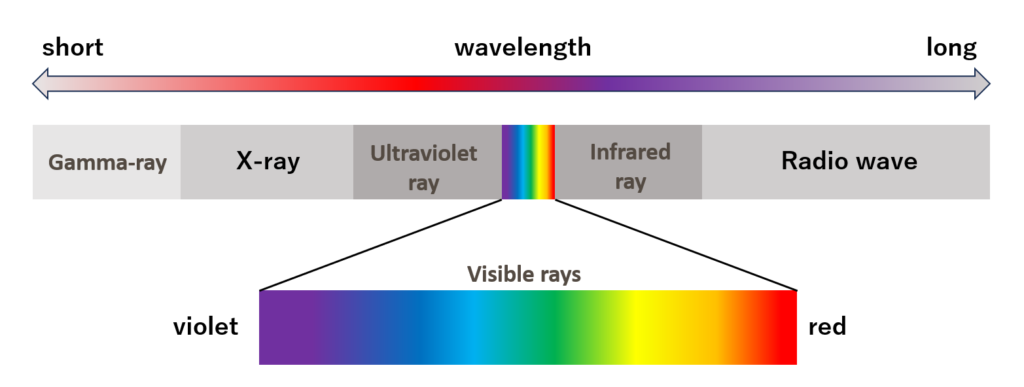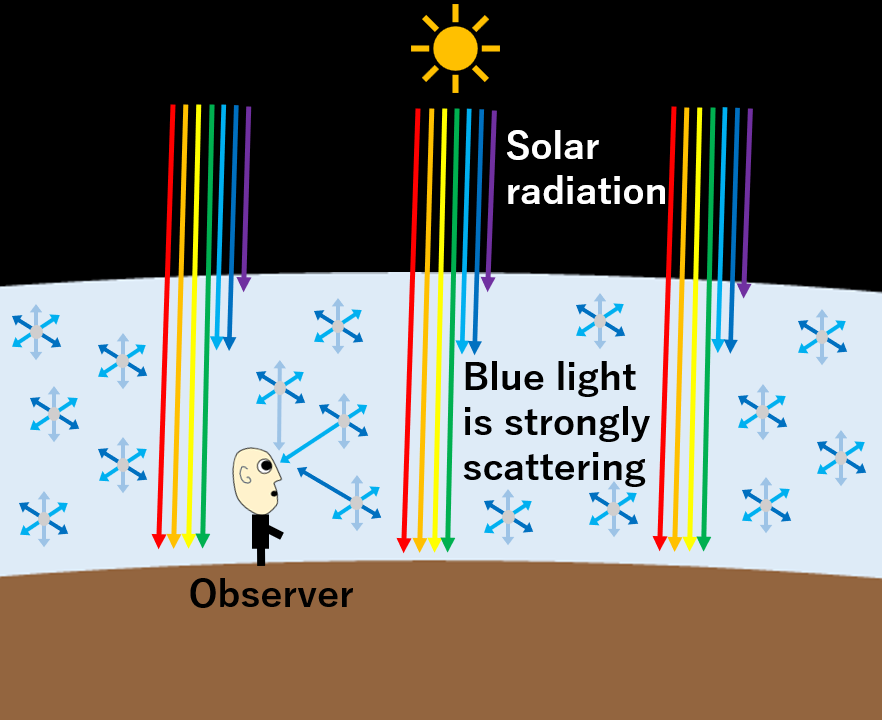【Request】 Why does the sky look blue while the universe is black?
The night sky and space look black, but the daytime sky on a clear day looks blue.
This article explains the mechanism in more detail.
Light coming from the sun (Solar radiation)
The reason why the sky looks blue has to do with the light emitted from the sun.
The sun emits waves called electromagnetic waves, which are called solar radiation.
Electromagnetic waves are waves through which changes in electric and magnetic fields are transmitted, and what is commonly called “light” refers to electromagnetic waves.
Electromagnetic waves are roughly classified by wavelength as follows.

X-rays used for X-ray examinations and radio waves essential for the information science society are also a kind of electromagnetic wave.
The sun’s light emits the most visible of these electromagnetic waves.
The reason the sky looks blue is because the light is Rayleigh scattered
Now here’s the thing, the reason the sky looks blue is because Rayleigh scattering occurs.
Rayleigh scattering is a type of scattering of electromagnetic waves.
The scattering of electromagnetic waves varies depending on their wavelength and the size (radius) of the particles in the medium.
The scattering of light that occurs when the wavelength of an electromagnetic wave is much larger than the size of a particle is called Rayleigh scattering.
Rayleigh scattering is named after Lord Rayleigh, who tried to explain this phenomenon.
The scattering intensity I due to Rayleigh scattering is given by the following equation ( John & Spyros, 2006):

where I0 is the intensity of the incident light, λ is the wavelength of the electromagnetic wave, V is the volume of the particle, R is the distance to the particle, and n is the refractive index.
This equation shows that the scattering intensity is inversely proportional to the fourth power of the wavelength of the electromagnetic wave.
In other words, the shorter the wavelength, the stronger the scattering intensity.
The strongest source of solar radiation was visible light, which is Rayleigh scattering because its wavelength is much larger than the radius of gas molecules in the air.
Among visible light, blue light has a shorter wavelength than other colors, so blue light is strongly scattered as shown in the above equation.

When strongly scattered blue light reaches our eyes, the sky turns blue.
A keen person might think, “Purple light has a shorter wavelength than blue light!”
The sky doesn’t turn purple because purple light is mostly scattered on its way through the atmosphere and decays before it reaches our eyes.
Reference
- John H.-S. and Spyros N.-P. (2016). Atmospheric Chemistry and Physics: From Air Pollution to Climate Change (3rd ed.). John Wiley & Sons, ISBN-13: 978-1118947401.
- 小倉義光. (2016). 「一般気象学」, 東京大学出版会.



疑問・コメント投稿